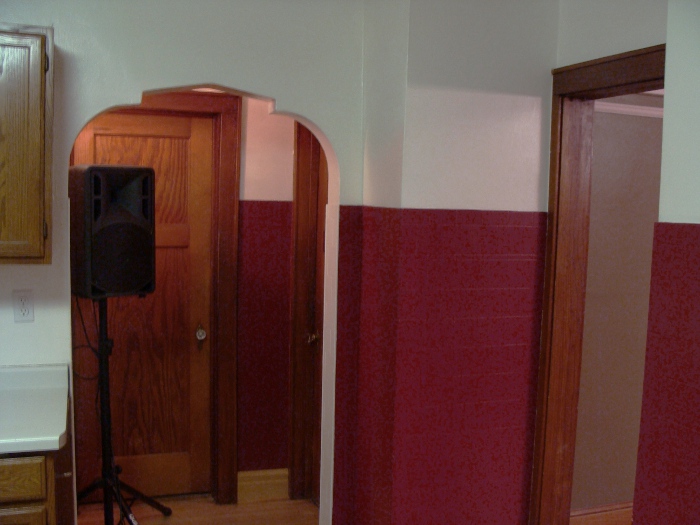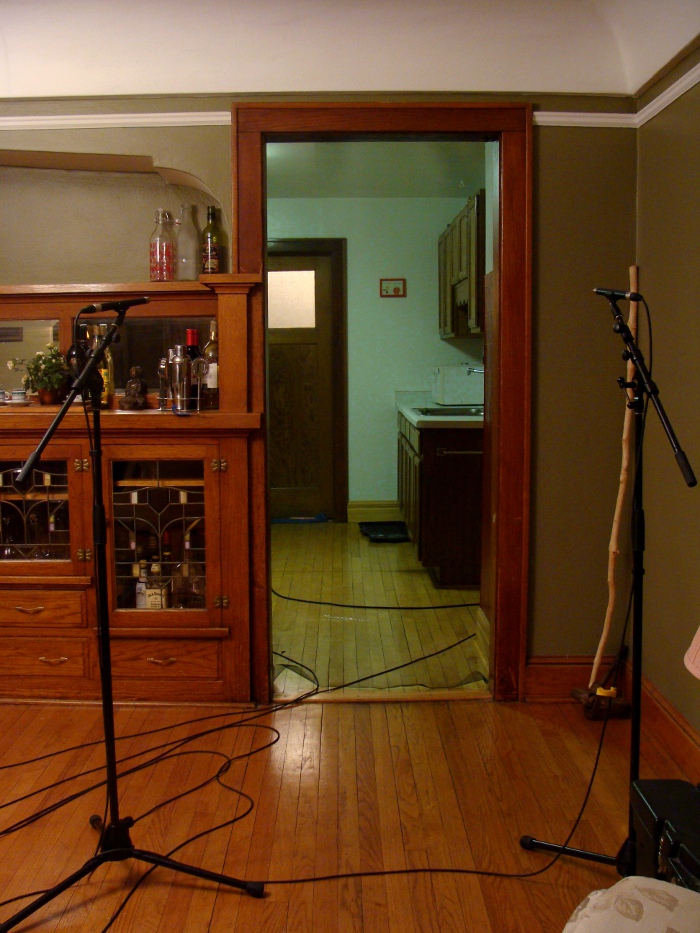Pipe Organ Grill Cloth Comparison Test
This article was published in the Journal of American Organbuilding (June 2012).
Special Thanks to Jack Bethards of Schoenstein & Co. Organ Builders, Acoustone, MDC Wall Coverings, & Wisconsin Architectural Sales for providing the large test specimens used in this investigation.
Introduction
The most visually striking Pipe Organs usually feature extravagant wood casework and pipe façades. However, finely finished façades are not possible on some installations due to aesthetic or budgetary limitations. In these instances, the organ builder will employ a sound “transparent” grille cloth to cover the tone opening. Until now, very few data were available on the impact that the various types of cloth have on pipe organ sound quality.
All of the available test reports for acoustic fabric products are designed to determine its sound absorption coefficient or effectiveness as a cover for acoustic treatment. For those tests, measurements are made with an impedance tube device, or in a reverb chamber over sound absorption material. Neither of these methods exactly corresponds to the effect the material will have on musical tone after it encloses a pipe organ chamber. Instead, it makes more sense to apply the methods used to determine Sound Transmission Loss through a wall partition.
In an organ chamber tone opening, much of the tone passes through the cloth off-axis. The effective material thickness becomes higher when the angle of incidence increases. Therefore, it would not be sufficient to simply place small cloth samples directly in front of a speaker. The tests must account for energy arriving at the cloth from a wide variety of angles and source positions.
The following experiment is an attempt to simulate the conditions of a pipe organ chamber and measure the effect of various types of grille cloth on tone passing through. Material specimens investigated include:
A) Wall Technology Eurospan Stretch
B) Guilford of Maine FR701
C) Bettervue Window Screen Mesh (standard window screen)
D) Mellotone DF 6002
E) Acoustone FR7000
F) MDC Wallcoverings Maia 1801
These materials include common grille cloth options (D, E) along with fabric sold as a decorative cover for sound absorbing wall panels (A, B, F). The MDC Wallcovering fabric features a protective acrylic latex backing which gives it a virtually airtight seal. I wanted investigate the effect this coating would have on sound transmission.
Test Apparatus & Measurement Procedure
For this experiment, a large (3′ x 7′) open doorway served as the pipe organ tone opening. This doorway was large enough to approximate the size of an organ chamber tone opening, but still able to accommodate the standard available fabric width without special framing.
The large, open kitchen area on one side of this doorway simulated the organ chamber (Source Room). I chose the kitchen due to the presence of sound-reflective surfaces on all walls, floor and ceiling. These hard surfaces helped ensure that an adequate amount of reflected acoustic energy transmitted through the doorway off axis. Two 350 Watt 2-Way loudspeakers were installed on stands within the kitchen area, at 45 degree angles approximately 10′ from the doorway. The speakers were fed a steady “White Noise” test signal, amplified to 100 dB-SPL within the kitchen area.
Two calibrated measurement microphones were placed at fixed positions on the other side of the doorway (Receiver Room), at 45 degree angles off axis and 4′ distance from the opening. Measurements were taken in two channels (both microphones) simultaneously using an FFT Real Time Analyzer set to 1.5 second averaging and un-wieghted frequency response.
All equipment was calibrated, configured, and locked in place prior to the first test. The white noise was engaged and sound levels measured in the Receiver Room with no fabric in place. Then one fabric specimen was sealed to the source side of the doorway with blue painters tape. The fabric covered the entire doorway, floor to doorway top. The white noise source was re-engaged and sound levels measured again within the Receiver Room. After each test, the previous fabric was removed and a new specimen was sealed into place. The procedure was repeated for all material specimens. No microphones, speakers, settings or parameters were moved or adjusted at any time after the first measurement began until all specimens had been tested.
Results
The two measurement channels for each test specimen were averaged together and compared to the open (no cloth) configuration. Sound levels at each octave band were subtracted from the open condition, showing the Transmission Loss across the audible frequency spectrum. These data appear in the chart below. Note that a higher dB figure in this chart signifies a greater reduction and therefore LESS sound transmission through the fabric at that frequency range. Also note that changes to sound level of less than 1dB are generally not perceivable to human hearing. Just Noticeable Difference (jnd) for sound level is typically between 1 and 3 dB depending on the individual listener. Due to the logarithmic nature of decibels, a reduction of 10dB will be perceived as half as loud.
Analysis
I was quite surprised at how effective grill cloth is; almost all of the fabric options performed much better than expected. Some of the options provided so little transmission loss that they would not impart any perceivable change to the pipe organ’s tonal characteristics (i.e. less than 1dB of attenuation at all frequency bands). Fortunately, these are the three most common choices for most organ builders:
Excellent (no perceivable change in tone):
Window Screen Mesh
Mellotone DF 6002
Acoustone FR7000
Two material types not commonly used as organ grille clothe also performed very well. These materials offer a more decorative appearance and will provide only a very slight shift in tonal quality (a 1-2dB reduction in high frequency brightness:
Good (very slight, barely perceivable change in tone):
Wall Technology Eurospan Stretch
Guilford of Maine FR701
The final material option (MDC Wallcovering Maia 1801) featured an acrylic backing seal that rendered it virtually airtight. This material attenuated mid and high frequency sound considerably and is -unfortunately- not acceptable as a pipe organ grille cloth.
After reviewing the test data and inspecting each fabric option, a pattern emerged. The more open the fabric weave, the better it performed in the testing. The window screen was the most open and provided the least attenuation, while acrylic backed fabric provided the greatest reduction of high frequency sound. Ordering the materials by visual opaqueness produces the exact sequence as when ordered by overall Transmission Loss!
Conclusion
This investigation has confirmed the excellent performance of a few commonly installed pipe organ grille cloth materials and proven the effectiveness of a few new options. When selecting a pipe organ grille cloth, be sure to choose a fabric with a maximum open weave and not one with a sealed acrylic backing.











My church has just completed a renovation. The very large wall In front of the Organpipes at the very front of the sanctuary was designed as a series of large wooden frames covered in a commercial fabric. All of the stretched fabric is beginning to wrinkle and sag. We all thought an “organ cloth” had been specified, but I don’t think so…
The wall is being redesigned. Can you give me some thoughts on why we do or do not need organ cloth? I can send a photo if you’d like
Connie,
The pipe organ grill cloth only serves a a visual aesthetic function. It is used where a pipe organ does not have a set of decorative facade pipes that will hide from sight the equipment in the organ chamber. The grill cloth covers the tone opening so that the organ chamber and equipment is not visible in the church. However, the grill cloth must be acoustically transparent, so it does not block sound at any frequency from transferring through the tone opening to listeners in the church. My suggestion is to speak with a good pipe organ builder, who can design and install a custom solution for your church. You could have facade pipes installed or a grill cloth.